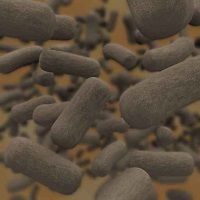Microbiota: Some Bacteria More Painful in IBS
Some intestinal bacteria cause more pain than others in patients with irritable bowel syndrome, according to study results reported by a team of researchers from North Carolina.

Some intestinal bacteria cause more pain than others in patients with irritable bowel syndrome, according to study results reported by a team of researchers from North Carolina.
In an abstract presented May 18 at Digestive Disease Week 2015, Yehuda Ringel, MD, of the division of gastroenterology and hepatology at the University of North Carolina in Chapel Hill, and colleagues at other institutions looked at intestinal microbiota and irritable bowel syndrome (IBS).
Their starting point was that the associations between the intestinal microbiota, IBS-related altered intestinal physiology, and their relation to clinical symptoms have not been adequately investigated.
The researchers collected fecal samples from 83 patients with IBS and from 24 healthy controls.
They assessed patients’ abdominal pain using patients' subjective accounts written in a daily diary and measured on the IBS symptom severity scale.
The team also determined patients’ pain thresholds by taking measurements of rectal balloon distension using an electronic barostat. The composition of patients’ intestinal microbiota was investigated by phylogenetic microarray analysis.
They found patients with IBS were more sensitive to pain, with measurement that showed they had lower pain thresholds than controls. They also found that presence of organisms classified as phylum Bacteroidetes and several Bacteroides groups were correlated with patients’ pain and had a negative effect on patients’ reports of well-being.
In contrast, organisms from phylum Actinobacteria and Bifidobacterium caused less pain and resulted in patients reporting higher levels of well-being.
“Abdominal pain correlated positively with richness, evenness, and diversity,” the researchers said.
There was a 53.5% variation in the barostat data related to three other bacterial groups: Clostridium orbiscindens, Anaerotruncus colihominis, and Anaerovorax oderimutans.
In conclusion, they wrote, “Our findings indicate that the microbial alterations associated with clinical pain reports and measured sensation thresholds are different, thus suggesting a complex multifactorial role of the intestinal microbiota in pain experience in patients with IBS.”